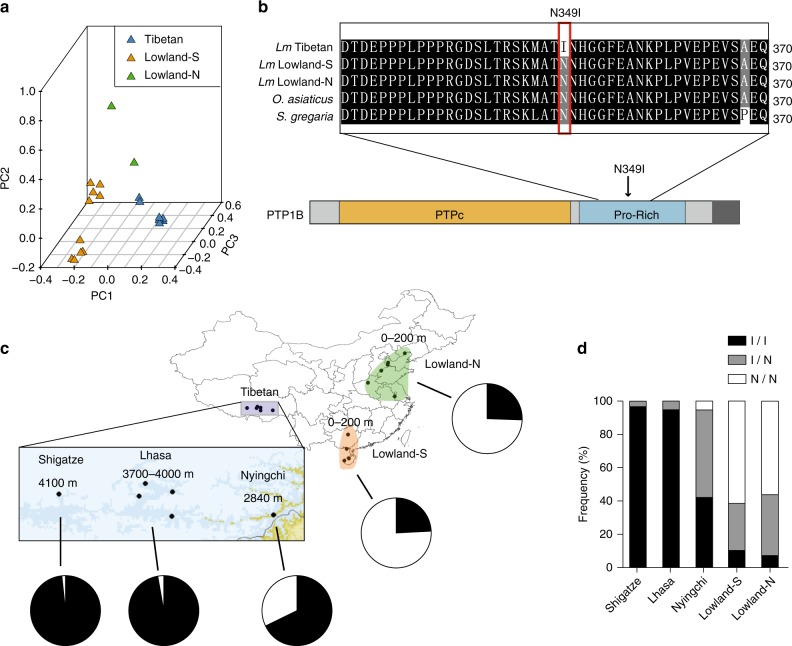Fig. 3.
Genetic differentiation of PTPN1. a Principle component analysis plot of geographically different locust populations based on the SNPs of the PTPN1 gene region. Lowland-S and Lowland-N represent South and North China lowland locust populations, respectively. b Multi-species alignment of amino acid sequence of PTP1B encoded by PTPN1. Oedaleus asiaticus and Schistocerca gregaria are two outgroup species closely related to Locusta migratoria (abbreviated as Lm). The missense mutation p.Asn349Ile (N349I) is located at the proline-rich (Pro-Rich) domain of PTP1B. c Mutation frequency of p.Asn349Ile in Tibetan and lowland locusts. The pie chart shows the proportion of p.Asn349Ile allele frequency in each population. Sample size: n ≥ 38. d Allele frequency of mutant loci in PTP1B. I/I, I/N, and N/N represent homozygous wild type, heterozygote mutant, and homozygous mutant for p.Asn349Ile, respectively. Maps were generated using DIVA-GIS (http://www.diva-gis.org/)

